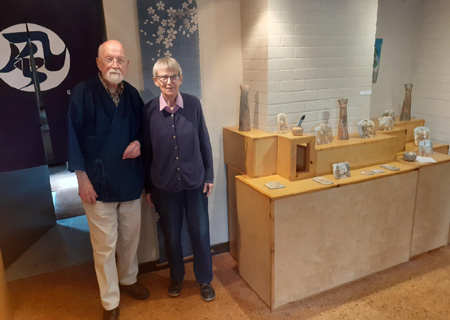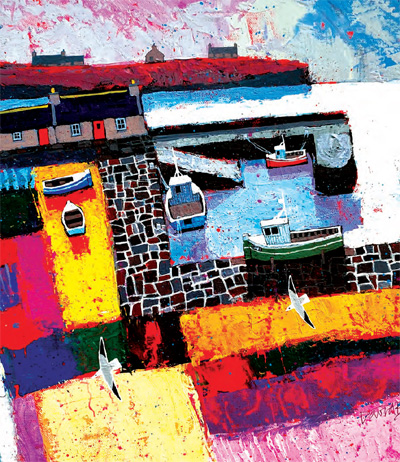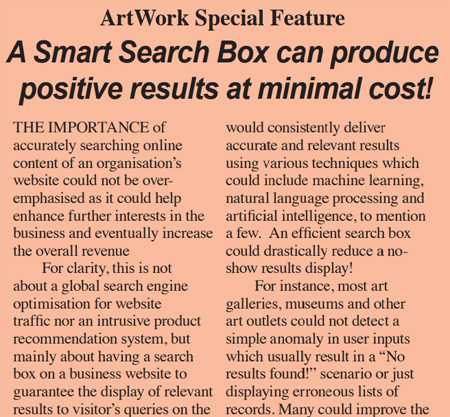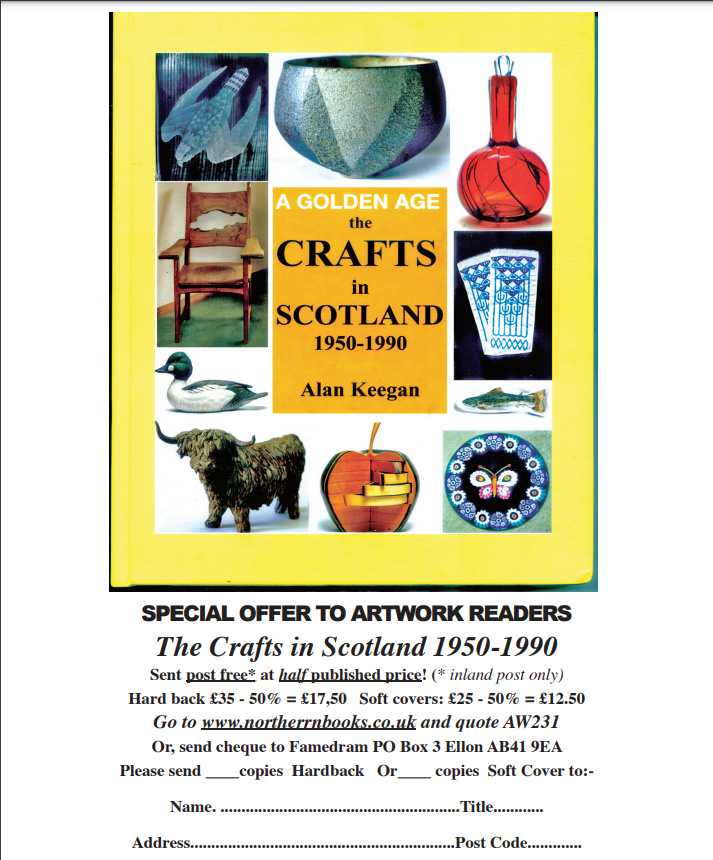
ArtWork Special

IN THAT CLASSIC Jonesy's Glovebox Touring Guide to Scotland, the categories are: 1: Avoid. 2: Ignore. 3: Worth a detour if passing. 4: Make a special trip. Kelso Pottery rates a 4**. 4, because it's unique. ** because the two stars who established it, Ian and Elizabeth Hird, are celebrating sixty years of ceramics with a retrospective exhibition from October 18 to November 1.
Wonderfully, over six decades, they've retained a selection of "keeper" pieces, showing the development of this longstanding creative partnership, be it subject matter, technique, clay, glaze, slip, or kiln. It embraces Ian's stoneware mugs, bowls, vases, tablets and feelies, alongside Elizabeth's architectural models of the town's special buildings, nativity scenes, and creatures.
A highlight is its international aspect; they've roamed far and wide in search of new inspiration, techniques, and mentors. 1966, Portugal, where Ian adopted the freedom of expression Luis Ferreira da Silva achieved decorating his pots with coloured slips on the wheel. Revisiting Jose Maria Rodrigues in 1988 for inspiration resulted in the unique Kelso Pit-Kiln. In 1975 Ian visited Shoji Hamada, one of Japan's most celebrated potters, to learn about colour.
Later the hair of a Moroccan donkey from Fez transformed the application of glazes. Back in Kelso, these influences were grounded in local clays. Tablets and feelies? Hand-held pieces, inspired by local history, both natural and ancient, delicately decorated with flora, birds, ancient symbols, and patterns produced by wrapping them in straw, oats, bracken and reeds. Best not just seen, but felt!
October 18 to November 1. Kelso Pottery, TD5 7BH






